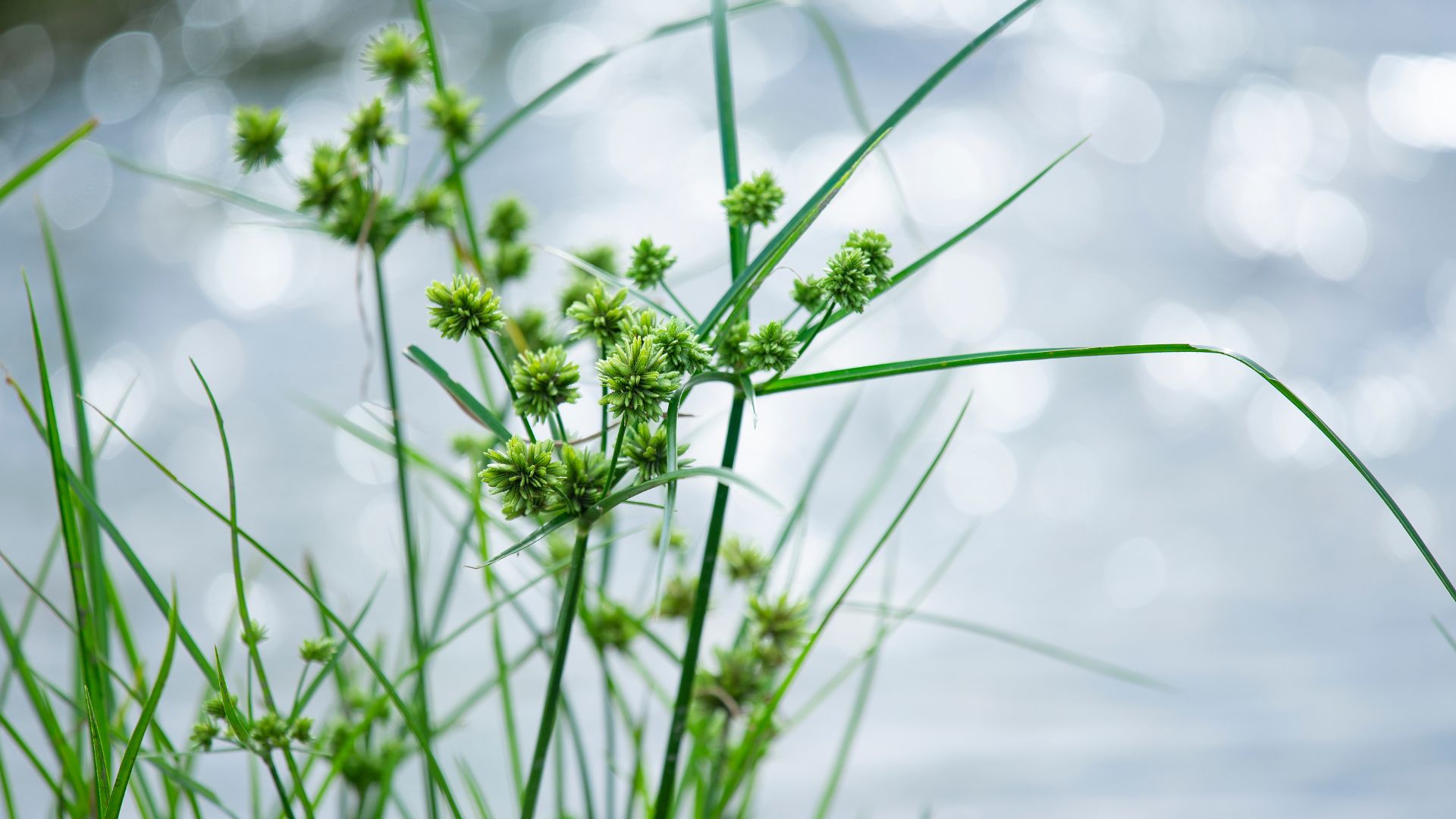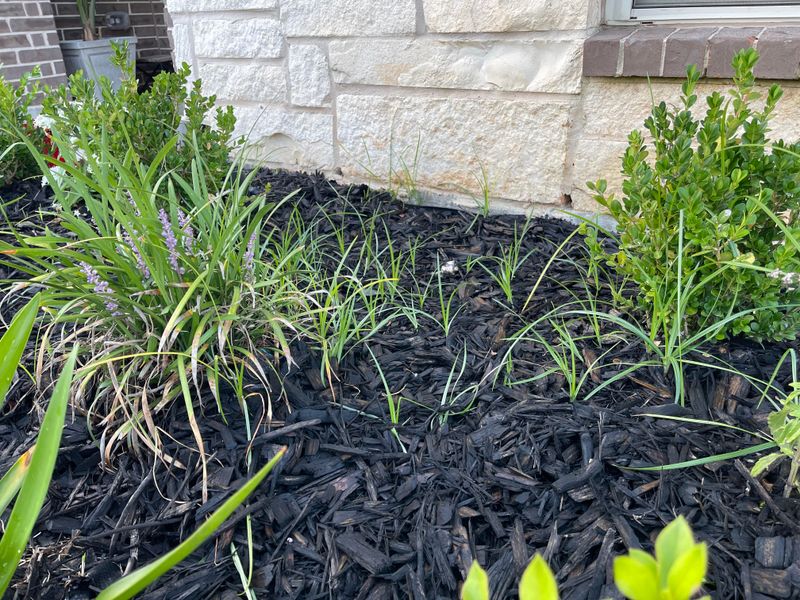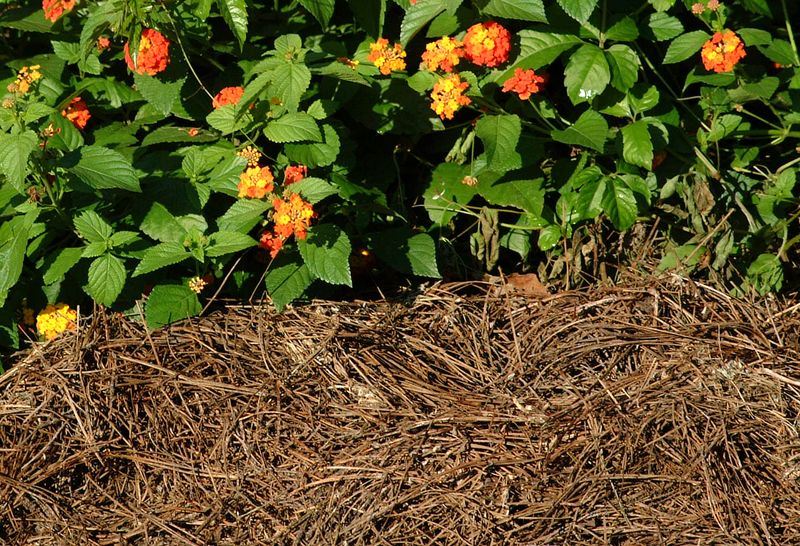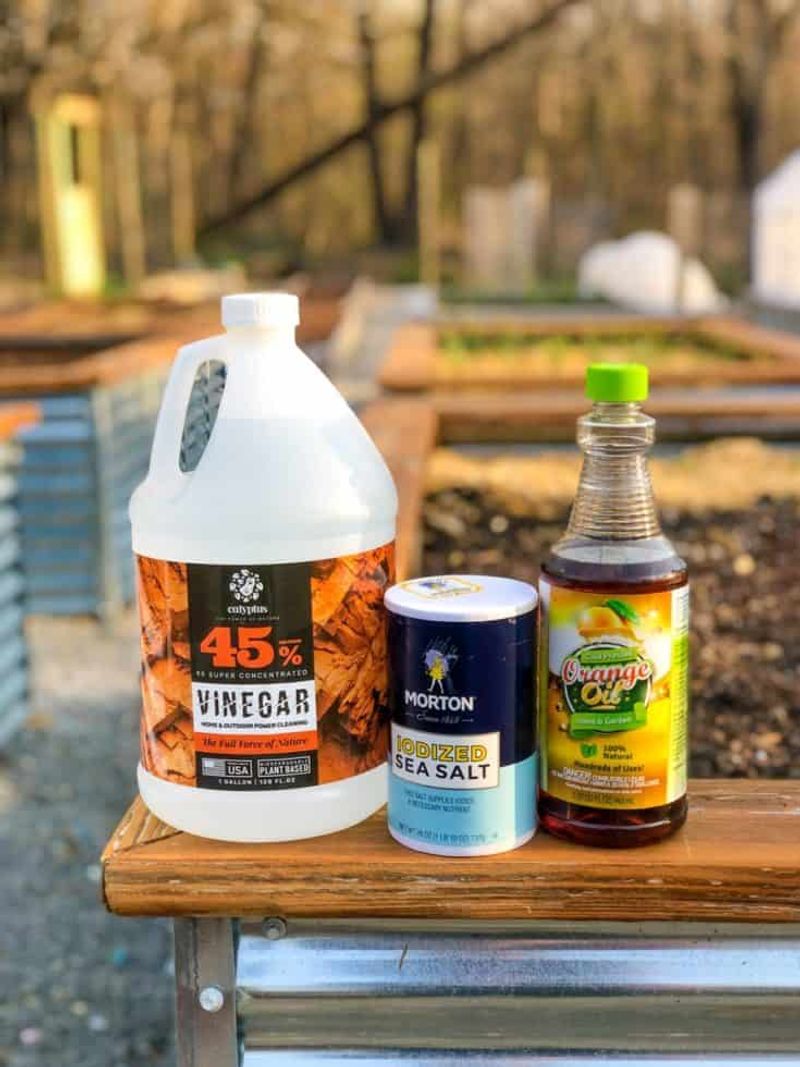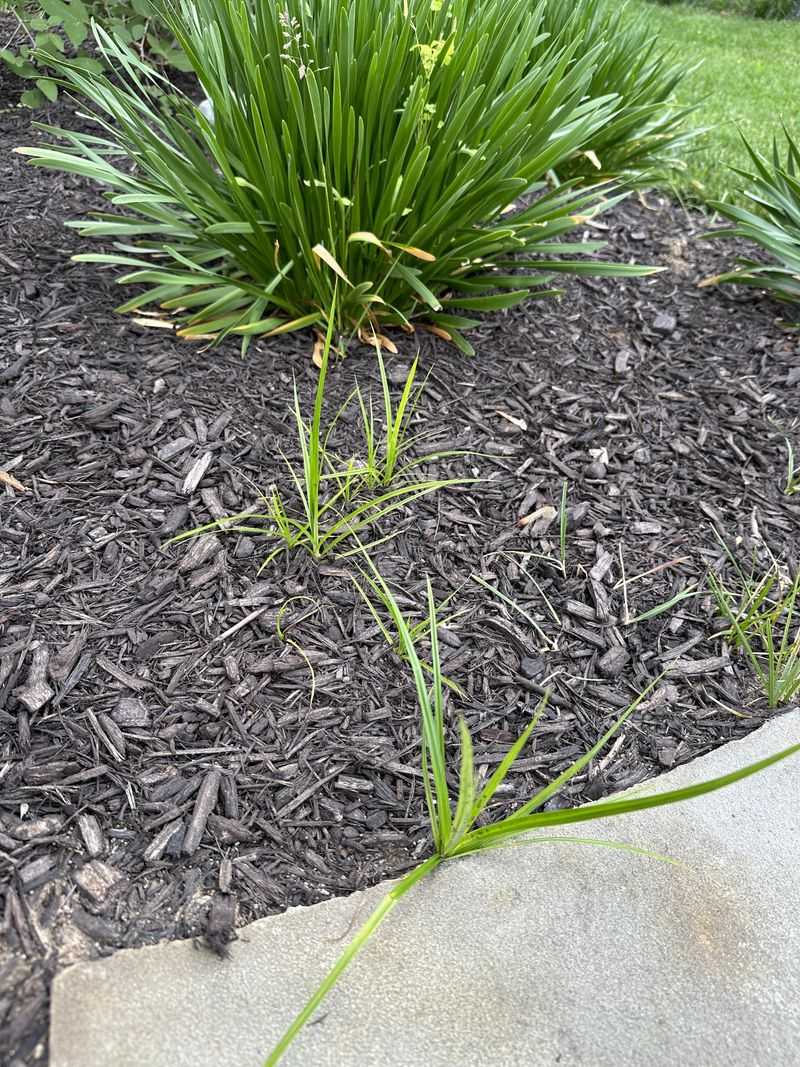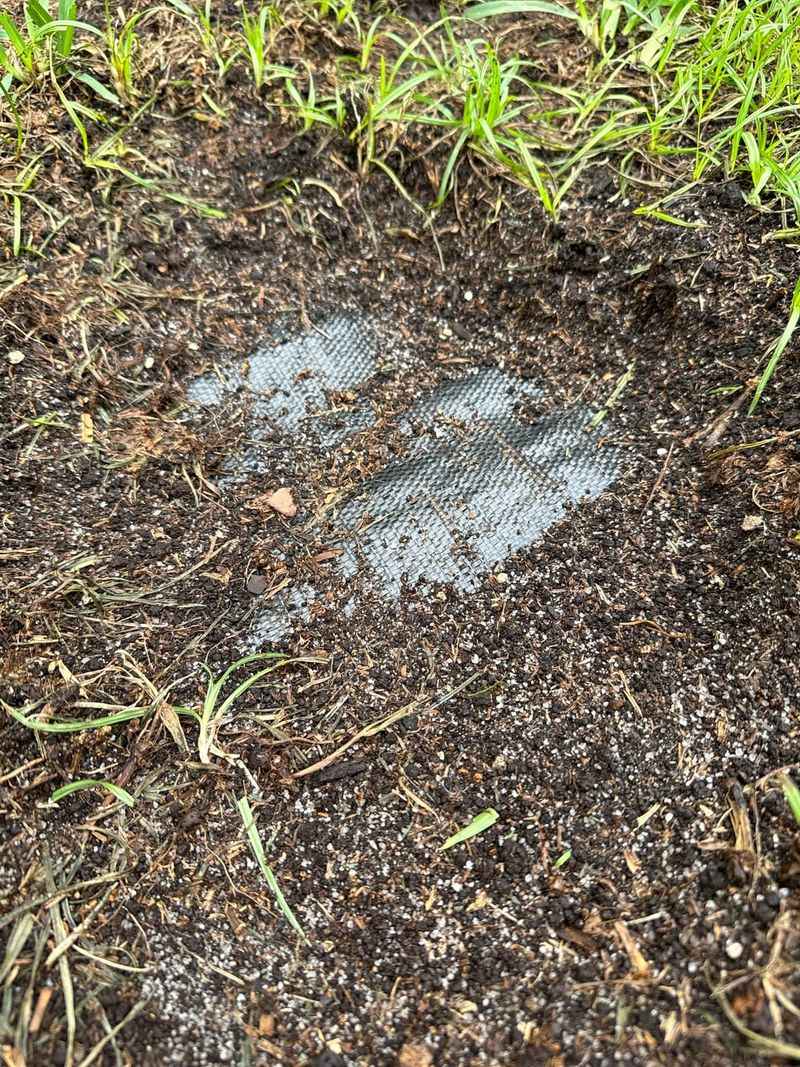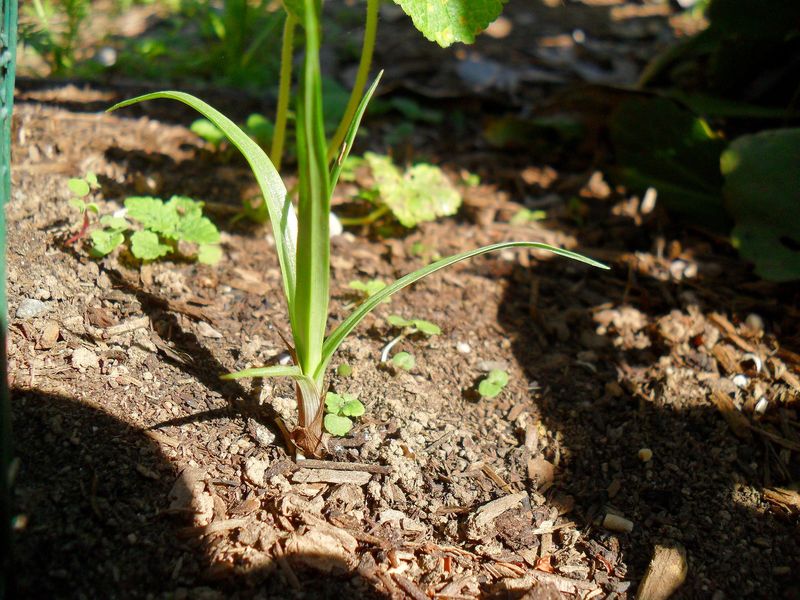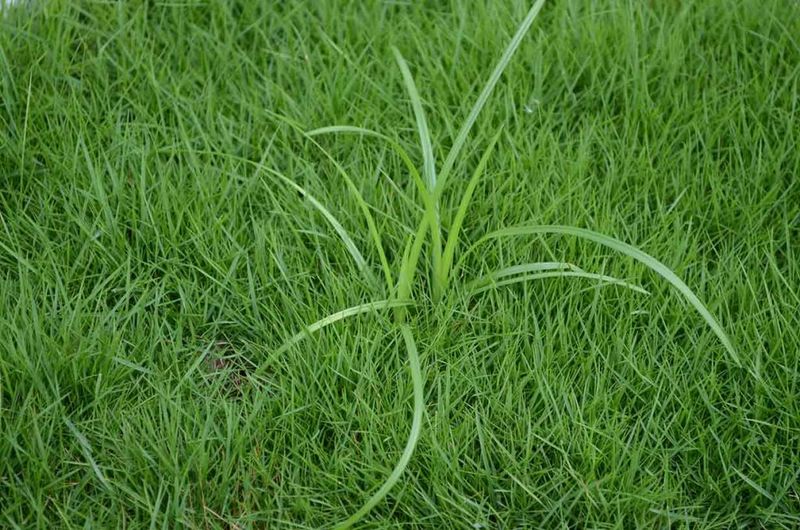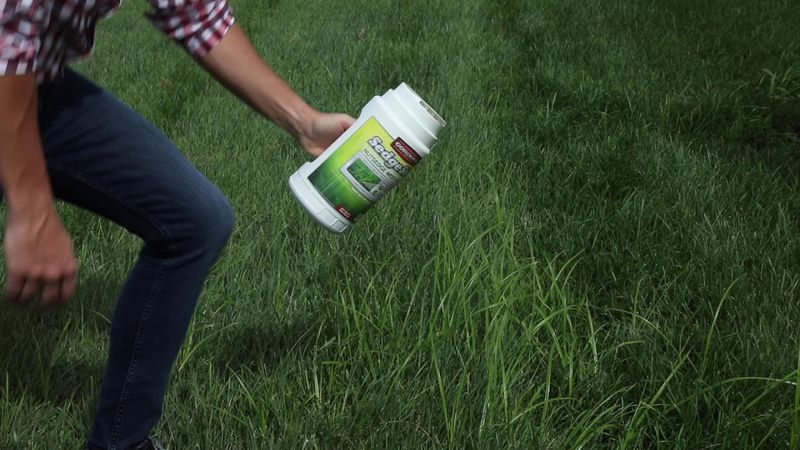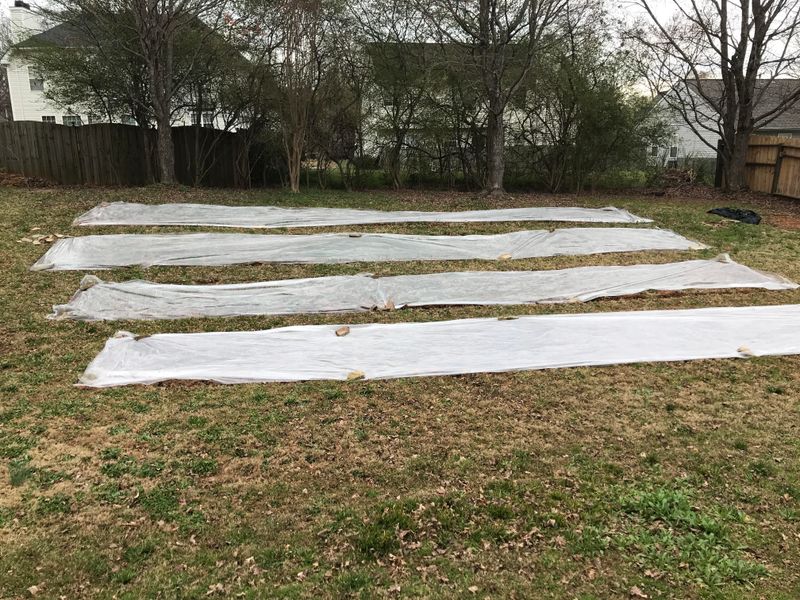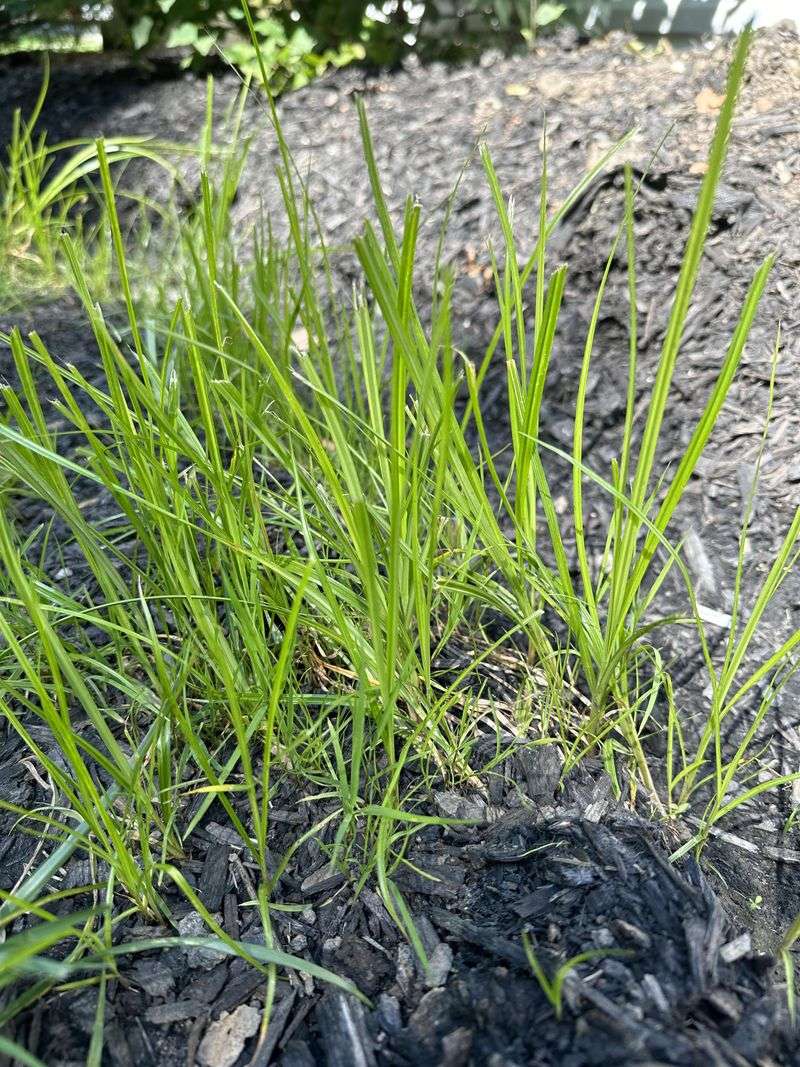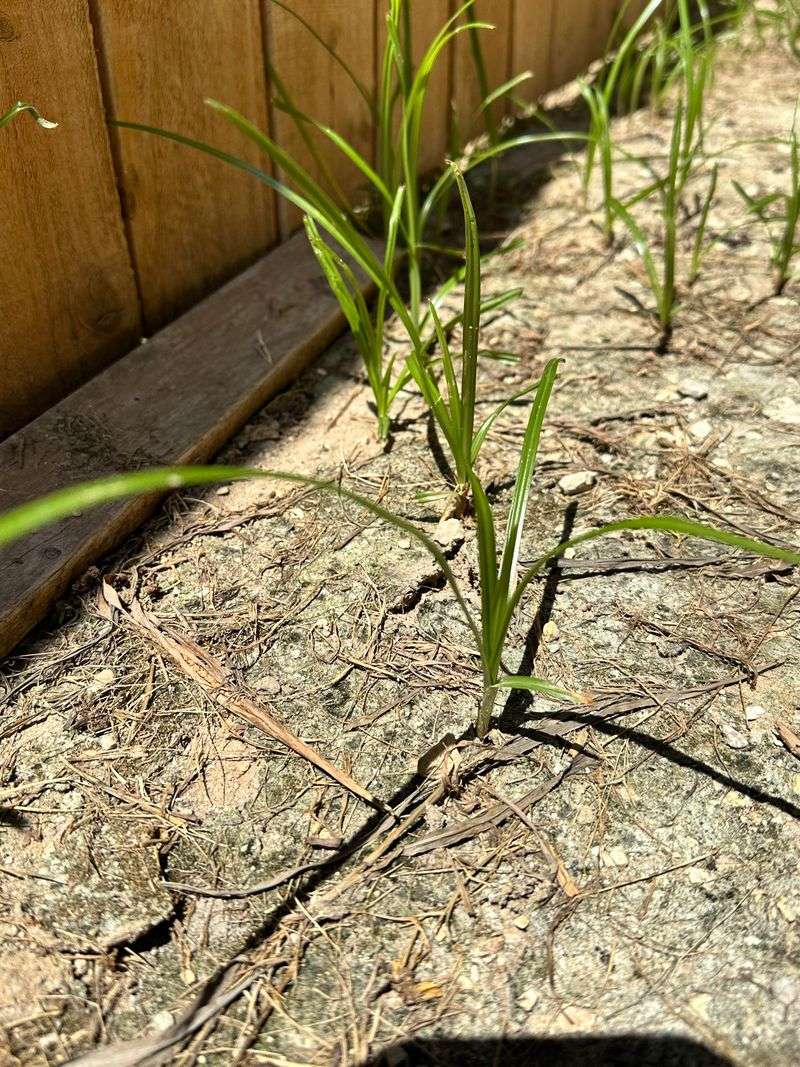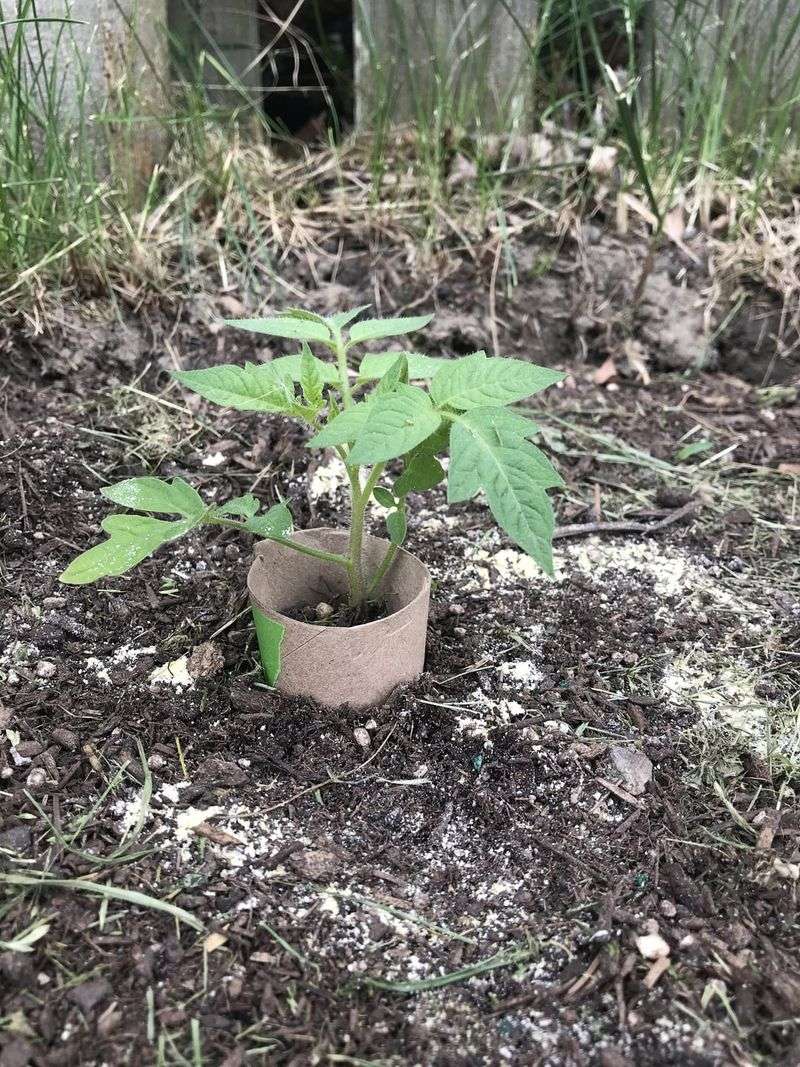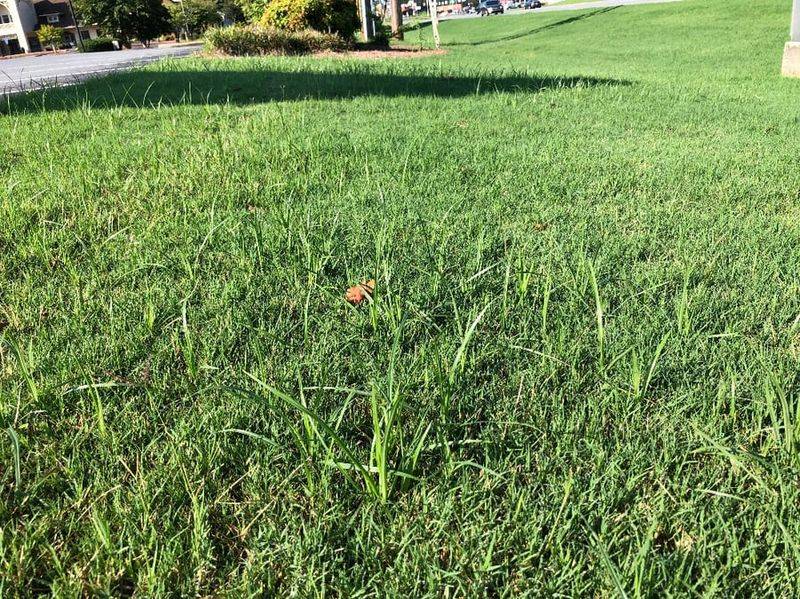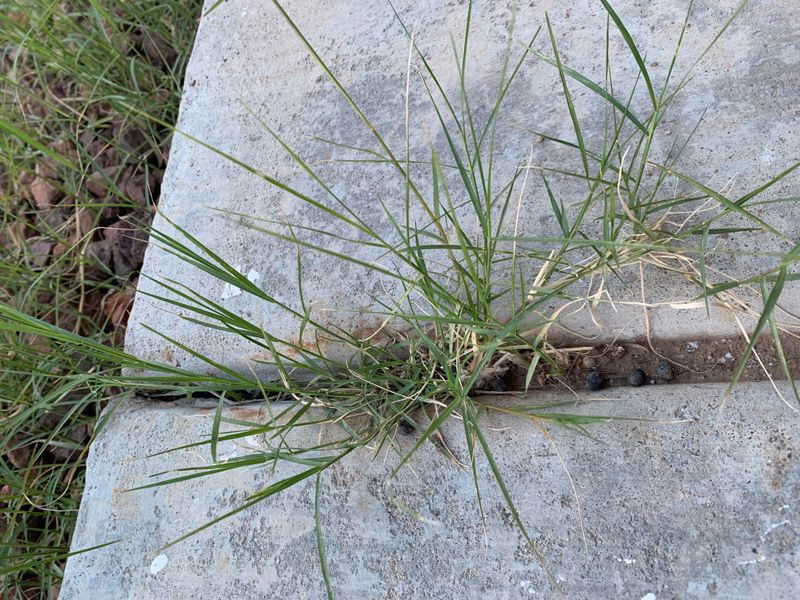Nutgrass—also known as nutsedge—is the kind of guest that shows up uninvited and refuses to leave. It spreads fast through underground tubers and can quickly take over your lawn if you don’t act early. Even the healthiest turf isn’t immune to its stubborn charm.
The key to winning against nutgrass is a focused, strategic approach. Hand-pulling can help in small patches, but deep-rooted tubers often regrow. Spot-treating with selective herbicides that target sedges while sparing grass gives better long-term results.
With consistent care and early detection, you can restore your lawn’s lush, green appearance. The sooner you tackle it, the easier it is to stay ahead—and keep your yard looking like the peaceful retreat it’s meant to be.
1. Pull It Out By Hand
The most direct approach often yields surprising results. Removing nutgrass by hand eliminates the entire plant when done correctly, including those troublesome underground tubers.
Moisten the soil first to make extraction easier. Grasp the weed at its base and pull slowly upward, being careful not to break the stems from the roots.
My neighbor laughed when he saw me on my knees pulling weeds one by one, but stopped chuckling when he saw how clean my lawn looked compared to his chemical-treated one.
2. Smother With Mulch
Depriving nutgrass of sunlight disrupts its growth cycle. A thick layer of organic mulch around garden plants blocks light from reaching nutgrass shoots, eventually weakening and killing them.
Apply mulch at least 3-4 inches thick using bark chips, straw, or newspaper. Refresh the layer periodically as it breaks down or gets disturbed.
After struggling with constant weeding, I switched to mulching around my vegetable garden. The difference was remarkable – significantly fewer nutgrass patches appeared throughout the growing season.
3. Use Vinegar Solution
Household vinegar makes an effective natural herbicide. The acetic acid burns and desiccates nutgrass foliage on contact, especially during hot, sunny days when the solution works most effectively.
Mix white vinegar with a tablespoon of dish soap, which helps the solution stick to the grass. Apply directly to nutgrass using a spray bottle, avoiding desirable plants.
During last summer’s heat wave, I treated a stubborn patch near my patio with this mixture. Within hours, the nutgrass was visibly wilting, and after three applications, it disappeared completely.
4. Apply Boiling Water
Extreme temperature shock provides immediate results without chemicals. Boiling water instantly kills nutgrass above ground and damages the underground tubers if applied correctly.
Pour carefully directly onto the center of each nutgrass plant. The water needs to be actively boiling for maximum effectiveness, so work quickly after removing it from heat.
While preparing pasta one evening, I used the leftover boiling water on some nutgrass near my kitchen window. The plants collapsed almost instantly, and I’ve adopted this simple technique for isolated patches ever since.
5. Cover With Landscape Fabric
Creating a physical barrier prevents nutgrass from reaching sunlight. Professional-grade landscape fabric blocks growth while allowing water and nutrients to reach desirable plants.
Secure the fabric tightly against the ground using landscape pins or heavy stones. Cut small X-shaped openings only where desired plants will grow.
The flower bed that once required weekly weeding has remained virtually nutgrass-free for two seasons since I installed quality landscape fabric. The initial effort has saved countless hours of maintenance.
6. Shade Out With Competitive Plants
Strategic planting creates natural competition for resources. Dense, fast-growing plants with spreading growth habits naturally suppress nutgrass by competing for light, nutrients, and space.
Choose ground covers like creeping thyme, sweet potato vine, or clover. Plant them closely together to quickly establish a living barrier against nutgrass intrusion.
The corner of my yard that once grew nothing but weeds now thrives with ajuga ground cover. Its purple flowers look beautiful, and more importantly, the nutgrass that once dominated has retreated almost completely.
7. Deplete Through Frequent Mowing
Regular cutting weakens nutgrass over time. Frequent mowing prevents the plant from photosynthesizing effectively, gradually depleting the energy stored in its tubers.
Set your mower at its lowest safe setting for your lawn type. Mow at least weekly during peak growing season, collecting clippings to prevent spread.
When I increased my mowing frequency from every two weeks to weekly, I noticed the nutgrass patches becoming thinner and less vigorous by the end of summer. Persistence with this method definitely pays off.
8. Treat With Selective Herbicides
Chemical solutions offer targeted control when natural methods fall short. Selective herbicides containing halosulfuron specifically target sedges like nutgrass without harming most lawn grasses.
Read product labels carefully for application rates and timing. Adding a surfactant helps the herbicide stick to the waxy nutgrass leaves for better absorption.
After trying several natural methods on a particularly stubborn infestation, I reluctantly tried a selective herbicide. The results were undeniable – within two weeks, the nutgrass had yellowed while my bermuda grass remained healthy.
9. Solarize Affected Areas
Harnessing solar power creates a natural oven effect. Soil solarization uses clear plastic to trap heat, raising soil temperatures high enough to kill nutgrass tubers and seeds.
Cover moistened soil with clear plastic sheeting, securing edges tightly. Leave in place for 4-6 weeks during the hottest part of summer for best results.
The side yard that was completely overrun last year became a temporary greenhouse under plastic. It looked strange to neighbors, but after removing the plastic, the area remained nutgrass-free throughout the following season.
10. Improve Soil Drainage
Modifying growing conditions makes your yard less hospitable to nutgrass. Since this weed thrives in wet areas, improving drainage creates an environment where it struggles to establish.
Add organic matter to heavy clay soils or install drainage solutions in problem areas. Consider raised beds in sections where water naturally collects.
The boggy corner of my backyard was once nutgrass paradise until I added a simple French drain. The improved drainage not only reduced nutgrass but also allowed me to grow plants that previously wouldn’t survive there.
11. Cultivate Deeply
Breaking up the root system weakens the plant’s ability to spread. Deep cultivation with a garden fork or tiller disrupts the networks of rhizomes and tubers that allow nutgrass to propagate.
Work the soil to a depth of at least 8 inches, removing visible tubers as you go. Repeat the process every few weeks during growing season to catch regrowth.
Last spring, I spent a weekend deeply tilling my vegetable garden before planting. The effort was substantial, but the reduction in nutgrass throughout the growing season made the sore muscles worthwhile.
12. Apply Corn Gluten Meal
Natural pre-emergent control offers a chemical-free alternative. Corn gluten meal prevents nutgrass seeds from developing roots when they germinate, effectively stopping new plants before they start.
Spread at a rate of 20 pounds per 1,000 square feet in early spring before nutgrass emerges. Water lightly to activate, then allow the area to dry thoroughly.
The flower bed where I applied corn gluten had noticeably fewer weeds of all types. As a bonus, it added nitrogen to the soil, giving my perennials an extra boost during their spring growth.
13. Introduce Beneficial Nematodes
Biological warfare happens naturally underground. Certain microscopic nematodes feed on the roots and tubers of nutgrass, gradually reducing its ability to spread and thrive.
Purchase from reputable garden suppliers and apply according to package directions. These living organisms work best in moist, warm soil conditions.
Skeptical at first about something I couldn’t see working, I tried beneficial nematodes in a test plot last year. The difference became evident within a month – that section now has about half the nutgrass of untreated areas.
14. Maintain Proper Lawn Height
Strategic grass management creates natural competition. Keeping your lawn at the optimal height for your grass type encourages dense growth that naturally crowds out nutgrass seedlings.
Most cool-season grasses should be maintained at 3-4 inches, while warm-season varieties do well at 1-2 inches. Never remove more than one-third of the grass height in a single mowing.
Since adjusting my mower settings to keep my fescue lawn taller, the thin areas that once invited nutgrass have filled in nicely. The thicker turf naturally suppresses weed growth without additional treatments.
15. Apply Salt Solution
Salt disrupts the cellular structure of weeds effectively. A concentrated salt solution applied directly to nutgrass draws moisture from the plant tissues, causing desiccation and death.
Mix 1 cup of salt with 2 cups of hot water until dissolved. Add a tablespoon of dish soap and apply directly to nutgrass foliage, avoiding desirable plants.
The walkway cracks where nutgrass constantly emerged were perfect for this treatment since I didn’t need to worry about damaging other plants nearby. After three applications, even the persistent patches finally surrendered.

